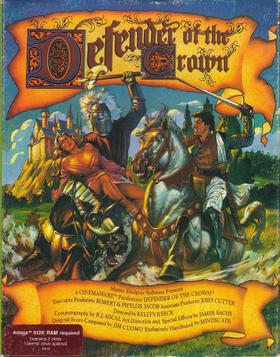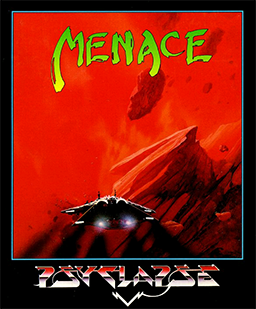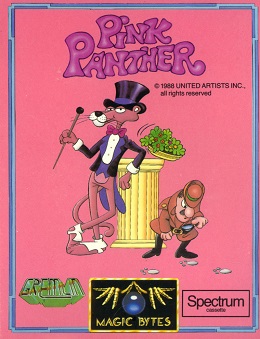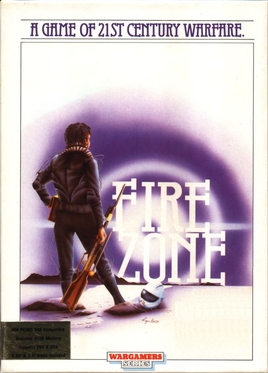
Bombuzal is a puzzle video game designed by Antony Crowther and David Bishop for Image Works. The game was released in 1988 for the Amiga, Atari ST and Commodore 64. It was also released in 1989 for MS-DOS and Dec, 21 1990 in Japan for the Super Famicom, with the North American version released on August, 1992 renamed as Ka-Blooey.

Wonder Boy in Monster Land, known by its original arcade release as Wonder Boy: Monster Land, is a platform video game developed by Westone Bit Entertainment and released by Sega in Japanese arcades in 1987 and for the Master System in 1988, with a number of other home computer and console ports following. The game is the sequel to the 1986 game Wonder Boy and takes place eleven years after the events in the previous game. After enjoying over a decade of peace on Wonder Land following the defeat of the evil King by Tom-Tom, later bestowed the title "Wonder Boy", a fire-breathing dragon called the MEKA dragon appeared; he and his minions conquered Wonder Land, turning it into "Monster Land". The people, helpless due to their lack of fighting skill, call for Wonder Boy, now a teenager, to destroy the monsters and defeat the MEKA dragon. Players control Wonder Boy through twelve linear levels as he makes his way through Monster Land to find and defeat the MEKA dragon. Players earn gold by defeating enemies and buy weapons, armor, footwear, magic, and other items to help along the way.

Defender of the Crown is a strategy video game designed by Kellyn Beeck. It was Cinemaware's first game, and was originally released for the Commodore Amiga in 1986, setting a new standard for graphic quality in home computer games.

Paperboy is an arcade action game developed and published by Atari Games, and released in 1985. The player takes the role of a paperboy who delivers a fictional newspaper called The Daily Sun along a street on his bicycle. The arcade version of the game featured bike handlebars as the controller.

Skyfox is a combat flight simulation game developed by Ray Tobey for the Apple II and published by Electronic Arts in 1984. Ariolasoft published the game in Europe. It was released for the ZX Spectrum, Amstrad CPC, Commodore 64, and Macintosh in 1985, to the Amiga and Atari ST in 1986, and to the PC-88 in 1988.

Star Goose is a vertically scrolling shooter that was published for the Amiga, Atari ST, and MS-DOS by Logotron in 1988. The player controls Scouser-Gitt, who pilots the eponymous Star Goose, a vessel that has been commissioned to scour the planet Nom and collect 48 crystals. Players must collect all six crystals in each of the game's eight levels to advance, while at the same time avoiding or destroying enemies and maintaining their shield, ammunition, and fuel levels. The game's surfaces are contoured, which affects the way that bullets travel, and contain tunnels that switch modes to a three-dimensional perspective where the player can replenish their resources.

Xenon 2: Megablast is a 1989 shoot 'em up video game developed by The Bitmap Brothers and published by Image Works for the Amiga and Atari ST. It was later converted to the Master System, PC-98, X68000, Mega Drive, Commodore CDTV, Game Boy, Acorn Archimedes and Atari Jaguar platforms. The game is a sequel to Xenon and takes place a millennium after the previous title. The goal of the game is to destroy a series of bombs planted throughout history by the Xenites, the vengeful antagonists of the first game.

Back to the Future Part II is a 1990 action game based on the 1989 film of the same name. It was developed and published by Image Works for Amiga, Amstrad CPC, Atari ST, Commodore 64, MS-DOS, Master System, and ZX Spectrum. The game has five levels based on scenes from the film, and was criticized as a poor conversion of the film. It was followed by Back to the Future Part III.

Hammerfist is a side-scrolling beat 'em up video game developed by Vivid Image and released in 1990 for the Amiga, Atari ST, Commodore 64, Amstrad CPC and ZX Spectrum.

Menace is a horizontally scrolling shooter developed by DMA Design and published by Psygnosis. It was released for the Amiga and Atari ST in 1988, and for the Commodore 64 and MS-DOS in 1989. The game is set on the planet of Draconia, where players are tasked with destroying the planet's defence mechanisms in order to kill the harmful creatures.

Yogi's Great Escape is a platform game based on the 1987 movie of the same name. It was developed by British studio PAL Developments and published in 1990 by Hi-Tec Software as a budget game. It was released in Europe for Amiga, Amstrad CPC, Atari ST, Commodore 64, Atari 8-bit computers, and ZX Spectrum.

Switchblade is a 1989 side-scrolling action-platform run and gun video game originally developed by Core Design and published by Gremlin Graphics in Europe for the Atari ST home computers. The first installment in the eponymous two-part series, the game is set in a dystopian future where players assume the role of Hiro from the Blade Knights as he embarks on a journey to defeat Havok, the main antagonist who broke free from his imprisonment after the sacred Fireblade was shattered into several pieces. Its gameplay consists of run and gun action mixed with platforming and exploration elements, with a main single-button configuration.

Ace is a combat flight simulator video game published for the Commodore 64, VIC-20, and Plus/4 in 1985 by Cascade Games. It was ported to the Amstrad CPC, Amstrad PCW, Amiga, and ZX Spectrum.

Bad Company is a computer game developed by Vectordean and originally published by Logotron in 1990. Released for the Amiga and Atari ST computer systems, the game was based on the concept of 1984 arcade game Space Harrier, with a grittier and more militaristic visual design. In 1991, the Amiga version was re-issued in the UK on Prism Leisure's "16-Bit Pocket Power" imprint.

P-47: The Phantom Fighter is a 1988 horizontally scrolling shooter arcade video game originally developed by NMK and published by Jaleco. Set during World War II, players control a Republic P-47 Thunderbolt fighter aircraft to face against the Nazis, who are occupying multiple countries around the world. Its gameplay involves destroying waves of enemies, picking up power-ups and new weapons, and destroying bosses. It ran on the Mega System 1 hardware.

Sex Vixens from Space is an erotic interactive fiction game developed and self-published by Free Spirit Software and originally released in 1988 for the Commodore 64 and Apple II as part of the compilation Sex And Violence Vol. 1. It was released as a standalone game, with the addition of graphics, in November 1988 for DOS and Amiga and in 1989 for the Atari ST. Sex Vixens was inspired by the 1974 sexploitation film Flesh Gordon. The game was panned by reviewers.

Judge Dredd is a 1991 platform shoot 'em up video game based on the character of the same name. It was developed by Random Access and published by Virgin Mastertronic. It was released in Europe in 1991, for the Amiga, Atari ST, Commodore 64, and ZX Spectrum. Critics found the gameplay repetitive.

Pink Panther is a 1988 video game based on the character of the same name. It was developed by German company Magic Bytes and published by Gremlin Graphics. It was released in Europe for Amiga, Amstrad CPC, Atari ST, Commodore 64, and ZX Spectrum. Pink Panther was criticized for its control and difficulty, although the Amiga and Atari ST versions received praise for their graphics.

Red Heat is a beat 'em up video game based on the 1988 film of the same name. It was developed by British studio Special FX and published by Ocean Software. It was released in Europe in 1989, for Amiga, Amstrad CPC, Atari ST, Commodore 64 (C64), and ZX Spectrum.

Firezone is a 1988 computer wargame developed by Arcadia and published by Personal Software Services (PSS) for the Amstrad CPC. It is part of PSS' Wargamers series. Ports for Commodore 64, Amiga, Atari ST, and MS-DOS were released later.





















